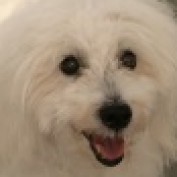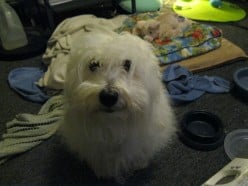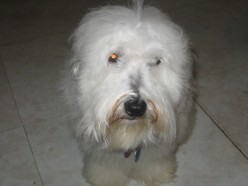 79
79- 2
Observation: A Powerful Tool for Relating With Your Dog
Tips and information about how to observe your dog's behaviors to get more insight on what is in his or her canine mind.
- 0
Training A Dog With A Soft Personality
Some insights and observations on training soft dogs from my working with Wally.
- 0
Generalizing What a Dog Learns During Training
Going from "theory" to "application" in training where a dog takes what he or she learns in your "class" out into the "real world".
- 0
Visualize What You Want, Then Teach the Dog
Ideas on how to use what I call "Behavioral Visualization" to enhance teaching your dogs behaviors, especially if you are shaping.
- 18
The Coton de Tulear: Temperament, Intelligence, and Personality
Coton de Tulears, or Cotons for short, are interesting little dogs that have fun personalities and easy-to-live-with temperaments. Here, we'll look at more of their traits.
- 3
Unlocking the Dog's Creative Potential
Wally was a challenge to train back when we first started. He was fearful of the training process, and uncertain of both himself and me. Fortunately, discovering and mastering shaping helped us both.
- 0
Contexts and Mental Maps - How a Dog Understands His World
Dogs use landmarks and mental maps as part of their learning, both of their surroundings as well as while engaging in training.
- 2
Latent Learning & Mental Recovery in Dogs: The Power of Sleep
Training is mentally tiring for a dog, but that's just one reason they sleep. The other is latent learning, which helps their mind sort and remember information just acquired.
- 8
Motivators: Finding...and Exploiting Them
The way I use what Wally likes in order to train him using shaping.
- 0
Handling Fearful Behavior
Dealing with fear during training is a challenge. Here's some ways I approached it when dealing with fear in my own dog.
- 4
Using Our Bodies to "Talk" to Our Dogs
Dogs read our bodies as much as they would another dog's body language. Here's some ways that may be useful in training and communicating with your dog.
- 4
Understanding Dog Body Language and Calming Signals
Learn how to read your dog's body language and calm them when they show signs of stress. Understanding canine communication is especially useful during training.
- 2
How Knowing Yourself and Your Dog Helps Training
A look at how evaluating yourself, your dog, and the things that oppose your goal can help you make progress in your training.
- 4
Games Working as Training
Games are wonderful. You want to teach your dog to follow rules? Teach him a game. You want him to be intent on you? Play a game with him. You want him to get "Exercise, Discipline, and Affection"? Play a game with him. You want to make training fun for both you and canine? Teach and play games.
- 2
Mastering Cues, Contexts, and Reward Schedules
Discover how cues, contexts, and reward schedules interact when training your dog.
- 2
Examples in Using Operant Conditioning
Some real world examples of the uses of operant conditioning and what quadrants are in play.
- 5
Tactics of Training: Classical and Operant Conditioning
Tactics is the method by which you will achieve an objective. This comes into play in dog training by way of operant and classical conditioning. This is the way we "attack" behavior issues, strengthen existing behaviors, and develop new behaviors.
- 0
Negotiation and Manipulation
Training is like a business negotiation. You have something he wants (possible rewards); he has something you want (a behavior). Here's some ideas on how to use this dynamic to your advantage.
- 0
Understanding the Basics of Dog Training
Things I had to learn starting out and, hopefully, can help others just starting their journey as first time dog owners or trainers.
- 4
Exploits of an Amateur Dog Trainer - Introduction and Starting the Journey
In the photo, you'll see Wally, the subject of hopefully a series of writing about my attempt at dog training. He's the first dog I've ever attempted to train and spend any amount of time with (he's my mom's dog and I watch/train him) and as luck...



















